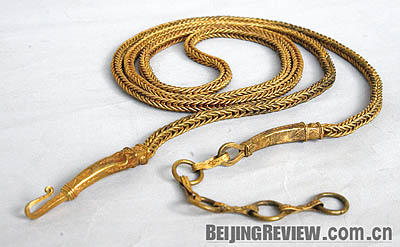|
On December 22, the largest floating crane in Asia, Huatianlong, made in China, lifted the steel cage onto a barge. The event was shown live by national broadcaster China Central Television.
Salvage mission
In total, the salvage operation of Nanhai No.1 took Chinese archaeologists 20 years due to suspensions caused by lack of money and technology.
Zhang Wei, founding Director of the Underwater Archaeology Center of China and the lead archaeologist in the Nanhai No.1 excavation mission, has spent most of his professional career exploring the ship since 1987.
Shortly after the founding of the Underwater Archaeology Center of China, an employee of Guangzhou Salvage Bureau told Zhang that the wreck of an ancient ship had been found in the South China Sea in August by a joint search program with a British Company, and the State Administration of Culture Heritage had stopped the salvage operation.
Zhang immediately realized the shipwreck's significance of proving the existence of the Marine Silk Road, but his center then had no personnel or equipment to conduct underwater archaeology.
A Sino-Japanese underwater archaeology team was founded in November 1989, to conduct research on Nanhai No.1. While scuba diving, Zhang for the first time touched the ship deck and the concretions on it. The Japanese side terminated cooperation with the Chinese archaeologists, and Zhang was unable to continue his underwater research due to lack of money and personnel. "A piece of porcelain, a 1-square-meter deck and 30-cm-high concretions," written in a research report, was all that was known about Nanhai No.1 for the next 10 years.
In 2001, when Zhang's underwater archaeology center was granted a fund of HK$1.2 million by the Hong Kong Underwater Archaeology Association, he decided to use the money to explore Nanhai No.1.
But Zhang's team still had great difficulty in locating the wreck. Just as the money was running out, team member Cui Yong found a piece of concretion in the water with some porcelain on it, which confirmed the location of the ship.
 |
|
LOST TREASURE: A gold plated belt, salvaged from Nanhai No. 1, has the artistic style of the Arabian countries (CAI FEIYAN) |
In 2002, Zhang's underwater archaeology team was granted a fund of 40 million yuan ($5.7 million) by the Ministry of Finance, which enabled them to collect artifacts from the shipwreck. When they entered the ship in March 2002, they were amazed by what they saw. In a small cabin where thousands of pieces of porcelain piled up, most in perfect condition. They eventually brought 4,000 pieces ashore. "It was really hard to describe my feelings back then," Zhang said. "I wanted to laugh and cry at the same time."
Permanent home
After Nanhai No.1 was hoisted from the bottom of the sea, the barge holding it was dragged to a temporary port before being moved to its new home, the 150-million-yuan ($21.4 million) Marine Silk Road Museum, specially built to exhibit the ship.
A glass pool, named "crystal palace," the permanent home for the ship, will be injected into 12 meters of seawater with the same temperature, pressure and other environmental conditions as the sea where the ship was found. Audiences will be able to observe the ship by walking around the transparent walls of the pool or through a corridor under the pool that gives a view of the underside. It has been estimated that there are still 60,000 to 80,000 relics on board.
Staff members of the museum have been injecting water into the box regularly to keep moisture in the environment. On March 26, the museum started to inject six meters of deep seawater into the glass pool while it was under construction.
The seawater in the pool has been filtered to avoid the entry of marine organisms that might harm the shipwreck. Every day, 10 percent of the water is recycled to ensure its freshness. The new museum is expected to open to public as early as the end of 2008. | 